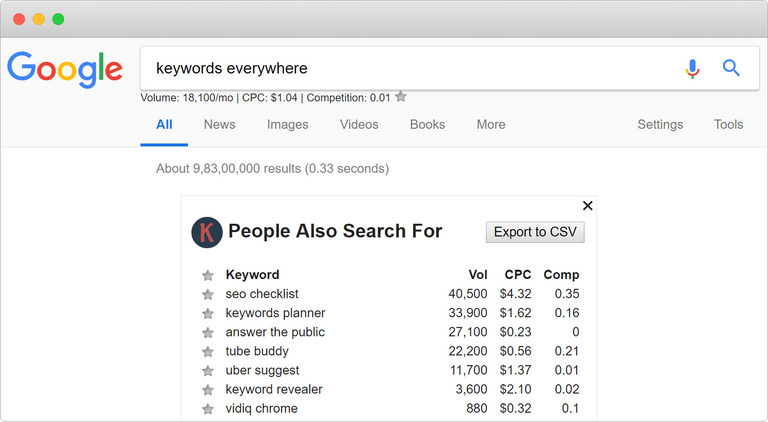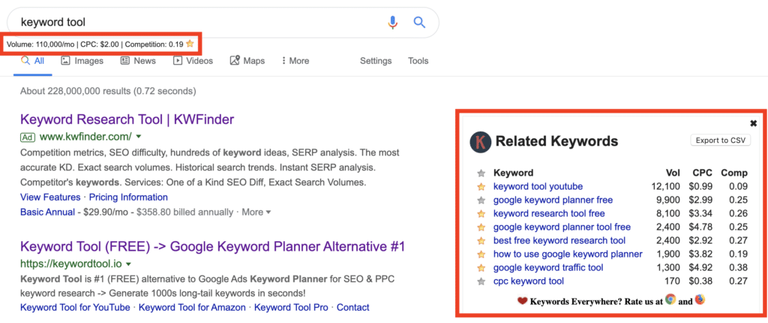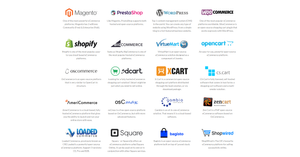eCommerce SEO Strategy: 5 Simple (Yet Powerful) Techniques to Rank Higher in 2023
In this post, I will show you how to tackle search engine optimization, known as SEO, to drive more traffic and sales to your eCommerce website.
In fact, these are the exact techniques that I used to help my friend Kolja get an insane number of visits to his eCommerce store and sell the entire stock of punk t-shirts.

Let's kick things off with eCommerce SEO strategy #1.
But before I share it with you,
Here's the truth:
SEO can be a daunting thought for small eCommerce business owners.
Fortunately, the best eCommerce SEO practices require no technical prowess at all.
If you can post a product to your eCommerce website, then you have what it takes to improve your eCommerce SEO.
It's as simple as that.
In fact, if you want to boost your online presence as a small business website, don't look only for shortcuts and quick-fixes to get the job done.
Those (almost) never work. Unless you are a proven SEO Ninja.
Instead, dust off your keyboard and put in action these five ways how to do SEO for an eCommerce website.
And now, the fun part.
Let's Play SEO
Classic western: Desperado, Antonio Banderas circa 1995. A guitar, a ponytail, and a gun.
The scene: He's standing on a dusty road flanked by his compadres. The bad guys pull up in a limo. He's calm, cracks his neck, stares deadpan into the camera, and says (read with a Spanish accent) "Let's play".

The SEO challenges are the bad guys!
No, I don’t mean you should immediately shoot your best SEO tactic with a rocket launcher, but at the beginning of every process, there’s always a chance to play it straight or play.
I choose play.
With that being clear, let's start to play with the first and most important eCommerce SEO strategy on the list.
What's inside
eCommerce SEO Strategy #1: Start With Keyword Research
Good eCommerce SEO starts with keyword research—and this is not a step to skip. If you do, all of the work you put into building your eCommerce website will be wasted effort. It is that important.
The purpose of keyword research is to identify the exact terms that your target shoppers use when searching for products you sell.
Then, you use those terms to craft thoughtful product pages and other sales-driving website content.
This SEO strategy is called "keyword optimization", and it's the basis of every sound SEO plan.
It starts with a well-researched list of keywords and related phrases and the average search volumes for each.
To uncover this important information, you can use free or paid keyword research tools. Here are some options to consider:
Keyword Research Tools for eCommerce SEO
| Keyword Tool | Price | Best For |
|---|---|---|
| Keywords Everywhere | Free From $10 | Quickly finding search volumes and related phrase. |
| Google Keywords Planner | Free with a Google AdWords account | AdWords users researching search volumes and related phrases |
| ahrefs | From $99/mo. | Intensive keyword research and SEO analysis. My personal weapon of choice! |
| Jaaxy | From $49/mo. | Extensive keyword research on a budget |
| SEMRush | From $99/mo. | In-depth keyword research and website SEO analysis |
| Moz | From $99/mo. | Intensive keyword research and SEO analysis |
And find even more great tools listed in my separate post on Best Tools [Mega List].
Keywords Everywhere is a great starting point if you're on a budget. Using this free tool, you can instantly see average monthly search volumes and related phrases for any term, like "handmade organic soap" or "keywords everywhere" as shown in the screenshot below.
Keywords Everywhere display Google's search volume for any term you search, plus related phrases to consider.
Paid tools like Ahrefs, SEMRush, and Moz deliver more in-depth keyword research results, plus other powerful SEO research and analytics tools. Moz and Ahrefs, for example, both have an interesting YouTube channel where they provide small business advice.
Each of the paid options offers a trial period, so you can check out their perks and conduct a good bit of in-depth research for free.
How to Research Keywords for eCommerce SEO
For basic eCommerce SEO, you need to research, gather, and record the most-searched keywords and terms related to the product you sell.
Returning to the example above, searching for "handmade organic soap" Keywords Everywhere displays search volume for that term - but that's not all.
It also displays related terms under the headings "Related Keywords" and "People Also Search For," along with the average search volumes for each. You can dig into related results to create a comprehensive list of terms targeting your products and business.
In particular, you're looking for three types of terms:
- Keywords: These are the short one- to two-word phrases, like "organic soap" and "handmade soap".
- Keyphrases: These are the three- to four-word phrases, like "handmade organic soap" and "homemade soap for sale".
- Long-tail terms: Longer phrases like "where to buy homemade organic soap" and "best organic soap for babies".
Paid keyword research tools let you save and sort these results within their system. However, a simple spreadsheet works well for tracking and organizing your terms.
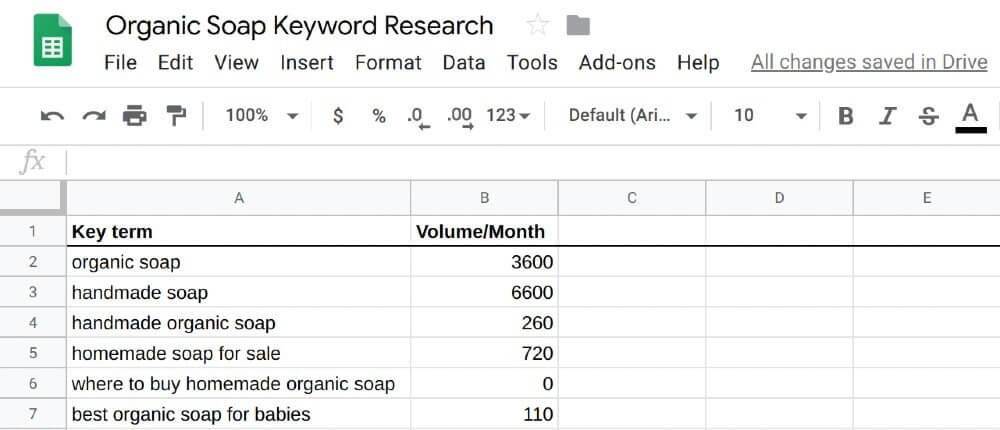
You can use a simple Google Sheet to track and organize your keywords and search volumes.
The results above show that shorter keywords tend to get higher search volumes - this is common. It would help if you incorporated these high-traffic keywords and phrases into your SEO plan.
However, long-tail terms can also help your pages and overall website rank higher faster, so don't ignore those.
You'll also run across terms with very low or no search volume, like "where to buy homemade organic soap", in the example above. Don't automatically discount these, especially if they contain high-traffic shorter phrases within. These can be useful as headlines for blog posts, and the traffic potential might surprise you.
eCommerce SEO Strategy #2: Product Pages
Once you have a list of your top keywords, keyphrases, and long-tail key terms, you're ready to apply these to your website content.
This includes your product and category pages, along with your blog posts and other website pages.
However, product pages are an eCommerce seller's main priority - because that's where the sales come from.
Product page structure varies among the different eCommerce platforms. However, most online store builders give you access to elements that are important to eCommerce SEO.
To illustrate, here's how an organic soap seller might create an SEO-friendly product page for the following item:
Handmade Organic Lavender Soap Bar — 3 ounces
Using the following target keywords:
- Organic soap: 3,600 average monthly searches
- Lavender soap: 1,900 average monthly searches
- Handmade organic soap: 260 average monthly searches
- Organic lavender soap: 40 average monthly searches
Craft a Product Page Title Using Target Keywords
The name of your product should include both high-volume and descriptive keywords.
This is important because most eCommerce platforms use the H1 title tags to identify the product's name on the page. Google and other search engines look for these H1 tags when indexing pages.
Make the most of this eCommerce SEO element by crafting product titles using your keywords naturally and descriptively, like this:
Handmade Organic Soap — Organic Lavender Soap Bar, 3 ounces
Insert Key Terms Into the Product Page URL
The URL of your product page is the web address for that specific item page on the internet.
Most eCommerce platforms let you customize your product URLs, and it's another place to make the most of your keywords. If you structured your item title well, you could almost duplicate it, like this
https://YourWebsiteName.com/category/handmade-organic-soap-lavender-soap-bar-3
Use Keywords on Image Files to Boost SEO
Product image file names can also boost your eCommerce SEO. If you shoot your own product photography, you can easily use keywords in your image file names. Likewise, if you use supplier-provided images, you can change the file names to reflect your brand and keyword strategy.
For example, if a soap seller uses three images for a product, they can use keyword-targeted filenames, like these:
- Main item shot: handmade-organic-lavender-soap-bar-three-ounces.jpg
- Glory shot: organic-soap-lavender-handmade-soap-bar-for-sale.jpg
- Group shot: organic-soap-three-lavender-soap-bars-handmade.jpg
It's also important to save product images in small, optimized file sizes to increase your page load speed, especially on mobile devices. Try to save image file sizes under 100kb whenever possible.
Alt tags are another image SEO element that most eCommerce platforms support. This is a text field that displays if the browser can't show the image. If you have an image alt tag field, enter a short description of the photo and insert your keywords in natural, reader-friendly language.
Use Key Terms in the Product Short Description
A product short description is available on most eCommerce platforms, and it displays a short blurb on category pages.
This is sometimes what Google uses as the search result for your page, so don't ignore this element.
Insert a short, descriptive phrase that uses your top keywords or phrase naturally.
Craft a Long Description Using Keywords and Keyphrases
SEO experts are unanimous in this advice: Write your own product descriptions! The more unique, helpful content on your page, the easier it will be for search engines to identify your page as valuable.
This time-tested SEO essential always pays off in the long run with better search results and happy, well-informed shoppers.
This isn't the place to skimp or take a shortcut—and please, never use your suppliers'—or worse, your competitors'—content. That's a blatant eCommerce SEO no-no and can result in penalties for your ranking.
Where expert opinion does vary is on the suggested length of eCommerce product descriptions. Some recommend around 300 words, and others bump that number up to 800 or 1,000.
The current search engine trend seems to favor longer content. So if you have it in you, shoot for the 800-word mark. If that's not feasible for all product pages, try to craft longer descriptions for your most profitable items or top sellers, at the very least.
Of course, you want to work your keywords and key phrases into your long description in a natural way. Generally, five to seven insertions of each target phrase in a 1,000-word description deliver an easy-reading result.
It's also a good idea to break up long content with subheads that include your key terms. Most eCommerce platforms turn subheads into SEO-friendly H2 and H3 title tags, giving another SEO boost to your product pages.
You can also use bulleted lists to break up long content and highlight things like:
- Product ingredients
- Materials
- Features
- Benefits
- Suggested uses
See how reader-friendly bulleted lists are? Best of all, they're easy to compile and add more points to your page's SEO scorecard.
Boost SEO With Product Reviews
Product reviews are a proven SEO powerhouse. If your eCommerce platform supports them, turn that feature on and ask for reviews in your order and shipping confirmation emails to your customers.
Building up user reviews helps your search results, plus it delivers essential information to potential buyers.
Use Product Videos to Extend Your Reach
Video is proven to drive both sales and higher search results. You should seriously consider adding it to your eCommerce website design.
The simplest product demo videos deliver more information to potential buyers than static images, so shoppers love them. Plus, adding videos to your product pages gets your website into the popular video search on Google and other search engines.
Most eCommerce platforms support video uploads or let you embed YouTube links to add videos to your product pages. YouTube links tend to be better since they boost your SEO even more by spreading your search exposure to YouTube.
eCommerce SEO Strategy #3: Create a Simple Category Structure
Thoughtful planning of your category pages can help set your eCommerce website up for SEO success. Your first goal is to create a logical category structure that quickly guides shoppers to the items they seek in the fewest clicks possible.
The current trend is three clicks, and you're out, meaning if a shopper on the homepage has to click more than three times to reach a product, you're in trouble. This is especially important on mobile devices with reduced screen sizes, especially since mobile commerce is growing fast. There's just not enough space to expand menus with many nested categories.
For example, here's a two-click category structure where each arrow represents a click:
Homepage > Category > Product
Translates to:
Homepage > Organic Soaps > Organic Lavender Soap Bar, 3 ounces
Now, here's how a three-click category structure works:
Homepage > Category > Sub-Category > Product
Translates to:
Homepage > Organic Soaps > Herbal Soaps > Organic Lavender Soap Bar, 3 ounces
Current eCommerce SEO trends lean toward more main categories with perhaps one sub-category level, like the examples above, but no more.
You want to avoid something like this five-click category structure, which can be confusing and frustrating to users and search engines:
Homepage > Organic Soaps > Organic Herbal Soaps > Organic Floral Soaps > Organic Lavender Soap > Organic Lavender Soap Bar, 3 ounces.
Other SEO Elements for eCommerce Category Pages
Like product pages, most eCommerce platforms give you control over some category page elements for SEO purposes. This usually includes the category page title and URL, a category image, and short and sometimes long descriptions. If these are available, you can apply category-specific keywords and terms to these elements to boost SEO.
A little attention to your category pages generally pays off in the long run. Product pages can come and go, depending on trends and item availability, but category pages tend to stick around. So, they attract backlinks over time and, in many cases, will outrank even your best SEO product pages.
eCommerce SEO Strategy #4: Blogging
If you're not blogging to grow your eCommerce website, you're likely missing out on higher rankings and traffic. Blogging is proven to increase search results long-term and drive audience growth across social media and other marketing outlets.
It's never too late to add sound SEO blogging into your content marketing strategy. Begin today, and you might be amazed at the results in a month or two.
Keyword research is a great starting point for your blog content planning. You can uncover a full list of blog post ideas in a single search, each with a ready audience. Back to our "handmade organic soap" keyword example below, the Related Keywords section provides several ideas for traffic-driving blog posts.
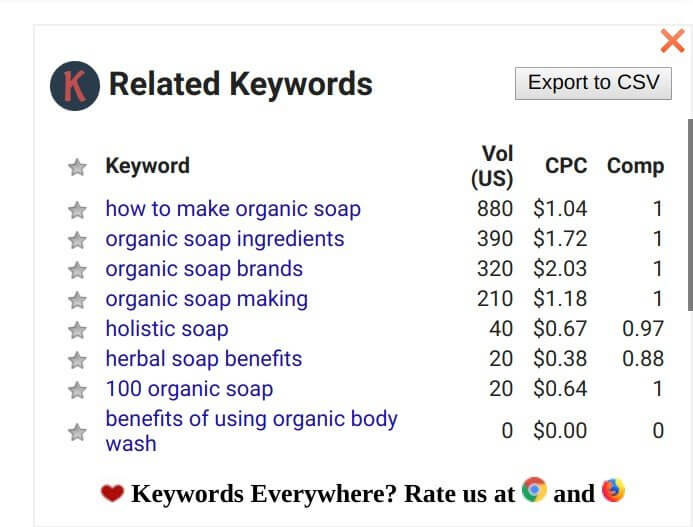
Related keywords and long-tail terms are easy to turn into audience-grabbing blog posts.
Here are just a few blog post ideas taken from the list above. These easily fit the brand, plus they can be written to promote products alongside informational content:
- How to Make Organic Soap—3 Tips From the Pros: This blog post can take advantage of 880 average monthly searches. You don't have to teach them all your tricks in this type of post. Just provide a few authoritative tips and maybe a coupon to encourage a sale.
- The Best Organic Soap Ingredients: This term has 390 monthly searches, which isn't bad. You can discuss the process of selecting, extracting, and purifying the best ingredients for your products—and maybe highlight some sale products at the end or in a sidebar.
- The Best Organic Soap Brands for 2019: This term has 320 monthly searches. You can position yourself as an objective expert, putting your products (with links to product pages) up against the competition.
Clearly, blog posts like this do more than just add content for ranking purposes. Each can feature links to related products, which might result in a sale, plus add internal links to improve eCommerce SEO further. Informational content tends to be very share-worthy, too, making it ideal for social media promotions.
eCommerce SEO Strategy #5: Build Backlinks
Backlinks are simply links from other websites to yours, and these can impact your search engine rankings in many ways. Essentially, when Google and other search engines find links from outside websites, they "see" that other sites consider yours an authority worth linking to.
With enough backlinks from authority websites, search engines start to consider yours an authority, too. Over time, this can improve your search rankings.
Suppose you're already creating valuable content through blogging and sharing it via social media. In that case, you have the first building block of this strategy in place. Good content paired with social media shares naturally attract quality backlinks over time.
You can also proactively build a backlink network using these tactics:
- Guest blogging: If you like blogging, reach out to other blogs or media outlets in your field and offer to write a free post or article for a backlink. The link itself can positively impact your rankings. Still, more importantly, your name and brand will reach new audiences and potential shoppers.
- Influencer marketing: Social media and blog influencers love to promote new finds and trends to their followers, usually for a fee or free products.
- Become a media source: Journalists, bloggers, and online media pros actively seek input from industry pros and generally link to your website if they quote you. This can be a great public relations strategy for small businesses, so explore this opportunity on the free Help a Reporter Out website.
There are technical aspects to backlinks that you may or may not have control over. You'll encounter them if you pursue this strategy. Simply put, the way outside websites structure their links to your website impacts the weight, or importance, that Google gives that link. Some types of links carry more weight than others, so not every backlink will positively impact your rankings.
However, most eCommerce SEO experts agree that the actual value of a backlink strategy isn't simply rankings. By publishing quality content on other websites, blogs, and influencer networks, you can reach far more potential shoppers—and that equals more sales. Any weight that Google applies to the backlink itself is icing on the cake.
The Bottom Line on eCommerce SEO
Ecommerce SEO isn't all high-tech and code-driven. In fact, without the SEO basics covered above, no amount of technical tweaking or fancy code will improve your search engine rankings.
Good eCommerce SEO centers on what search engines strive to offer users—unique and valuable content that matches search queries. Any eCommerce seller—from startup to seasoned pro—can deliver that on any eCommerce platform.
It starts with thorough keyword research and clever use of key terms on product and category pages and blog content. Done right attracts backlinks naturally, and you can expand that process with guest posting or influencer and media outreach.
None of this is a fast fix, but one thing is certain.
If you take the time to set up eCommerce SEO right, it will pay off for years to come.
For those who run their webshop on Shopify, here is an excellent read on Shopify SEO.
I'd also like to hear from you: What SEO strategies have worked for you?
If you found this post helpful, I'd appreciate it if you would share it.
Author: Drasko Georgijev
I'm a financial technology professional with 20+ years of experience in payment cards, eCommerce, transaction processing, and switching.
From time to time, I'm sharing some helpful tips, tactics, and news about Digital Commerce and Fintech.
So don't forget to share this post and subscribe to my mailing list.
Got questions? Ping me on LinkedIn.


